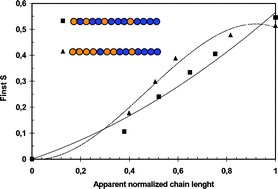Effect of the synthetic methodology on molecular architecture: from statistical to gradient copolymers
Abstract

* Corresponding authors
a
Laboratoire de Physico-Chimie des Polymères, UMR 5067 CNRS, Université de Pau et des Pays de l'Adour, Hélioparc 2 Avenue du Président Angot, 64053 Pau cedex, France
E-mail:
laurent.billon@univ-pau.fr, khaked.karaky@univ-pau.fr, jacques.desbrières@univ-pau.fr, christophe.derail@univ-pau.fr
b
Laboratoire de Chimie Théorique et Physico-chimie Moléculaire, UMR 5624 CNRS, Université de Pau et des Pays de l'Adour, Hélioparc 2 Avenue du Président Angot, 64053 Pau cedex, France
E-mail:
eve.pere@univ-pau.fr, claude.pouchan@univ-pau.fr

 Please wait while we load your content...
Something went wrong. Try again?
Please wait while we load your content...
Something went wrong. Try again?
K. Karaky, E. Péré, C. Pouchan, J. Desbrières, C. Dérail and L. Billon, Soft Matter, 2006, 2, 770 DOI: 10.1039/B607797H
To request permission to reproduce material from this article, please go to the Copyright Clearance Center request page.
If you are an author contributing to an RSC publication, you do not need to request permission provided correct acknowledgement is given.
If you are the author of this article, you do not need to request permission to reproduce figures and diagrams provided correct acknowledgement is given. If you want to reproduce the whole article in a third-party publication (excluding your thesis/dissertation for which permission is not required) please go to the Copyright Clearance Center request page.
Read more about how to correctly acknowledge RSC content.
 Fetching data from CrossRef.
Fetching data from CrossRef.
This may take some time to load.
Loading related content
